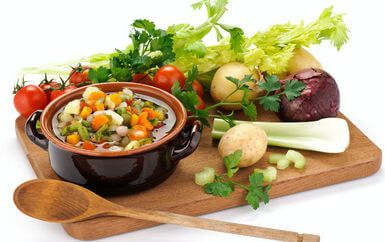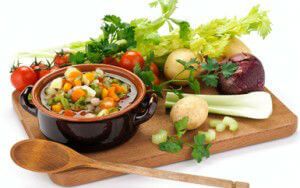
If you’re considering giving up meat, it can be rather confusing to decide which type of vegetarian diet to adapt; there are a wide range of types, including everything from the strict vegan style to a more flexitarian diet that incorporates a limited amount of meat.
If you’re seeking optimal health, the decision to eat meat or go without can be a difficult one. The negative impact on the animals, the environment as well as health issues are just some of the reasons that many people are choosing some form of a vegetarian diet.
What is best can vary individually. Some people seem to thrive on a vegan diet while others feel almost sickly. If you aren’t sure which diet to adapt, here is a look at the different vegetarian types to help you make your decision.
The vegan diet
Vegans eliminate all animal based foods, and anything derived from an animal, including dairy products, eggs and even honey. It is the most restrictive of all vegetarian diets and typically refers to more than just the diet alone. A vegan may avoid any type of animal product including non-food items such as wool, silk and leather.
It takes quite a bit of planning to get all the essential nutrients, including protein, iron and calcium on this diet, but it’s not impossible.
The lacto-vegetarian diet
Those who adopt this diet, eliminate all meat products, including eggs, but continue to eat dairy products. This provides more flexibility and makes it a bit easier to plan meals. If you choose to be a lacto-vegetarian, you’ll want to ensure the dairy products you eat come from antibiotic and hormone-free cows.
The lacto-ovo vegetarian diet
On this diet, one would abstain from eating all meat while still incorporating eggs and dairy products into the diet. This is one of the easier forms of vegetarianism to adopt. As with the lacto-vegetarian diet, you should be sure to choose dairy products from antibiotic and hormone-free cows as well as free-range, organic eggs.
The pescatarian diet
A pescatarian diet is one of the least restrictive forms of vegetarianism. On this diet you would avoid all meat products with the exception of fish. Dairy products and eggs are also consumed. If the thought of giving up all meat seems to be too much of a challenge, this diet may be the answer. Some people use this diet as part of a transition to a vegetarian diet.
By choosing foods like wild-caught salmon, you’ll get a good dose of healthy omega-3s as well as one of the most powerful antioxidants, astaxanthin.
The Flexitarian
A flexitarian diet is a fairly new term for someone who is an “on and off” vegetarian. Many don’t consider this type of diet to be true vegetarian. Someone who is a flexitarian may eat a basic lacto-ovo vegetarian diet most of the time, and occasionally eat meat products. The diet can also be used as a transition to a more restrictive kind of vegetarianism.
 There is no one diet that is right for every person. If your goal is to become a vegan, it can be accomplished easier by transitioning slowly from flexitarian and gradually reducing meat and other animal products a little at a time.
There is no one diet that is right for every person. If your goal is to become a vegan, it can be accomplished easier by transitioning slowly from flexitarian and gradually reducing meat and other animal products a little at a time.
For optimal health and the betterment of animals as well as the environment, keep in mind that if you do choose to eat some meat, it should be derived from organic, free range sources in order to avoid toxins, hormones, antibiotics and other substances that can cause great harm. By supporting local, sustainable and organic farms in your local community, you’ll also be supporting the larger community of which we are all a part.
-The Alternative Daily

